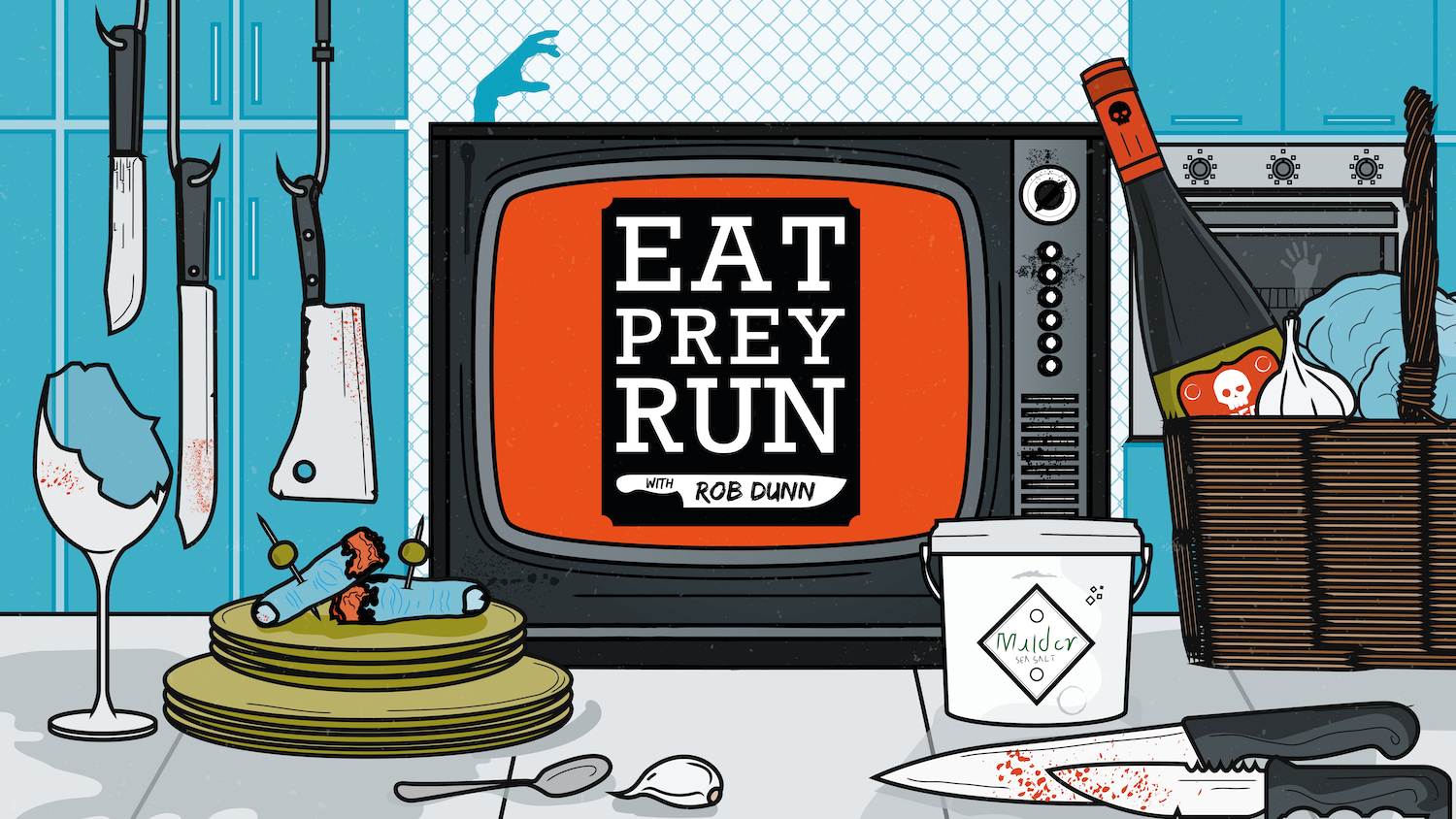
Applied Ecology Calendar
Eat, Prey, Run: A Neanderthal Cook-A-Long
- This event has passed.
Event Navigation

Join Rob Dunn, Rebecca Wragg Sykes, and food writer, food stylist and cookery teacher Anna Burges-Lumsden. Anna will walk listeners through a Neanderthal inspired meal. As she does, Wragg Sykes and Dunn will highlight additional details about what we do and don’t about how Neanderthals prepared and enjoyed their meals. Anna’s meals have been chosen so that they can be made at home, click on the hyperlinked titles to download the recipes:
Jonzac Jerky
Cold/air dried meats such as wild boar salami, lardo, wild venison carpaccio and air dried duck
– supplied by https://trealyfarmcharcuterie.co.uk
– reindeer or caribou can be sourced from specialist meat suppliers
- While Neanderthals had a much more varied diet than they used to be credited with, products from hunted animals were always the centrepiece. There’s no direct evidence for food storage, but we know they systematically butchered carcasses and took the best parts elsewhere. Drying using the wind (jerky) would leave no archaeological trace.
- During colder periods (glacials) we find large reindeer processing sites such as Jonzac, France, but in warmer periods (interglacials) or regions like the Mediterranean, boar and especially red deer were favoured prey, and sometimes also birds including waterfowl.
1) Denisova highball – homemade rhubarb lemonade, gin, fresh rosemary
2) Rosamund’s martini – homemade rosehip syrup, rose petal infused gin, a dash of lemon, garnished with dried rose petals in a martini glass
3) Lynford Gimlet – homemade nettle cordial or nettle presse mixed with sloe gin, topped up with soda and served in a highball glass
- These drinks are a bit of fun, and there is certainly no evidence Neanderthals were brewing booze of any sort. Yet there’s plenty of known cases where animals consume fermented fruit, and sometimes seem to enjoy the effects.
- The plants chosen for the mixes mostly reflect those native to Eurasia. Denny’s Highball is named for a girl whose mother was a Neanderthal, and father a Denisovan (closely related hominin population). She lived in Siberia; rhubarb was understood by the Romans to come from this region east of the river Rha, or Volga. Rosamund’s Martini is named for the archaeologist protagonist in The Last Neanderthal, a 2018 novel by Claire Cameron. Nettles were amongst the pollen found from the roughly 60,000 year old Neanderthal site of Lynford, UK.
Main course: Casserole des Canalettes
Rabbit, apple and pearl barley casserole with cider and wild garlic
(This will be flavoured with marrow bones and pigs trotters to add extra flavour and thickness to the sauce)
Served with heritage carrots roasted in goose fat with wild thyme.
- Rabbits were certainly on the Neanderthal menu in some times and places like Les Canalettes, France, while marrow from inside bones (whether porcine or otherwise) was a crucial resource for the thousands of calories they needed every day.
- While we associate cereal plants with the first farmers of the Neolithic, starch evidence from dental calculus (the grot hygienists remove) shows some Neanderthals were eating wild grains too.
- Crab apples would have been obvious falling from trees during warm (or interglacial) climate phases, and Neanderthal feet must have released the scent of wild garlic as they explored those forests. Heritage carrots are suggested as the closest to the wild variety in Eurasia.
Honey baked pears with blackberries, toasted oats and hazelnuts/cob nuts.
- Wild pears are native to Eurasia, and were collected in later prehistoric times, and while brambles would have snagged many Neanderthal legs, their striking fruit would surely have been noticed.
- Charred remains of hazel and other nuts are known from a number of Neanderthal sites, and most intriguingly, the discovery of beeswax from Grotta del Fossellone, Italy being used in an adhesive recipe means that Neanderthals probably knew about honey, and also had sweet taste receptors to enjoy it.
Wragg Sykes has recently published the acclaimed and award winning, best-selling book, Kindred a definitive account of the lives of the Neanderthals based on the most up-to-date archaeological discoveries. Dunn, who has, along with Monica Sanchez, just published a new book about the evolution of flavor and its role in human evolution, Delicious.
Watch live here on Eat, Prey, Run.
Hosted by Channel Zed – friends of Applied Ecology!
The College of Humanities and Social Sciences at NC State University, in partnership with Fermentology and Channel Zed’s Eat, Prey, Run is sponsoring this event and the Neanderthal’s Cookbook on April 15th.
Details
- Date
- April 19, 2021
- Time
-
12:30 pm - 1:30 pm
- Event Category:
- Applied Ecology
- Website
- https://youtu.be/mKyY732ulKA